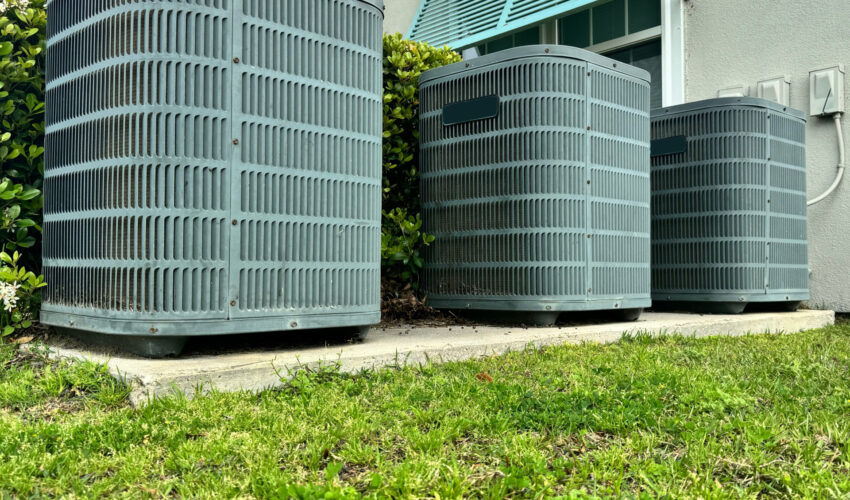When it comes to heating and cooling your home, choosing the right HVAC system size is essential for both comfort and efficiency. If your system is too large or small, you’ll likely face issues like increased energy costs, uneven temperatures, humidity issues, and unnecessary wear and tear on your equipment. To determine the ideal HVAC tonnage for your home, professionals use a heat load calculation. Here’s what goes into determining the correct HVAC tonnage for your space.
Heat Load Calculation: The Key to Proper Sizing
The process of determining the HVAC size for a building is called a heat load calculation. Manual J, developed by the Air Conditioning Contractors of America (ACCA), provides a comprehensive approach that considers several factors to calculate the heating and cooling loads required for a residential space. While it can be done manually, it’s typically performed using software or spreadsheets due to the complexity and number of variables involved.
Factors Involved in a Heat Load Calculation
- Walls and Siding: The length, height, and thickness of each wall, along with the siding type, insulation value, and orientation (north, south, east, west), all impact the heat load. For example, walls with high insulation and facing less direct sunlight will require less cooling.
- Roof and Ceiling: The roof’s material, insulation, pitch, and even ceiling height contribute to heat retention or loss. Homes with better-insulated attics, for instance, will demand less cooling power.
- Floors and Foundation: Similar to walls, floors affect heat load based on whether they’re below grade (like basements) or above, as well as the type of materials and insulation used.
- Windows and Doors: The size, type, and placement of windows and doors have a significant effect. West and south-facing windows typically let in more heat, while the insulation properties (e.g., double-pane, low-e glass) windows help determine how much heat they retain or repel. The material your doors are made of is also a contributing factor.
- Shade and Landscaping: Trees, shrubs, and other structures around your home may provide natural shade, reducing the cooling load by blocking sunlight from reaching windows and walls.
- Geographic Region and Temperature Preferences: The climate where you live dictates the baseline requirements for cooling. In areas like San Antonio, for example, the default indoor temperature is 75°F when outdoor temperatures reach 97°F. Personal preferences, such as wanting a cooler home during summer, can also influence tonnage decisions.
- Internal Gains: This includes the number of people and appliances in the home, both of which contribute to the overall heat load. Even though household occupants might change, a general default is usually applied.
- Ductwork and Airflow: The type and condition of ductwork, along with any leakage and the blower type, all play into how much cooling capacity is needed to maintain comfort.
Why Tonnage Isn’t a One-Size-Fits-All
Once all these factors are accounted for, the heat load calculation provides two essential BTU ratings: one for heating and one for cooling. HVAC equipment is then selected based on these ratings, with systems typically rated in nominal “tons.” However, not every system labeled with a specific tonnage has the same output.
For example, a 3-ton system from one manufacturer may perform differently than a 3-ton system from another. You may need to move up in tonnage to obtain the same results.
Additionally, while the load calculation accounts for a multitude of variables, it doesn’t necessarily capture your personal heating and cooling needs. Oftentimes customers select a larger unit because they like to host larger groups of people or simply prefer cooler indoor temperatures.
Therefore, it’s crucial to work with a professional who can help match your home’s unique requirements with the most suitable HVAC model.
Replacing Existing HVAC Systems
Though load calculation is required for any new builds, if you’re replacing an existing system, a full load calculation may not always be necessary—especially if the current system has adequately met your cooling needs over the years. However, if you have concerns about the current system’s performance, a load calculation paired with a conversion about your cooling and heating goals can help your HVAC contractor select the proper system to suit your home.
The Importance of Proper HVAC Sizing
Choosing the right-sized HVAC system goes beyond just comfort. Oversized units cycle on and off more frequently, causing increased wear, humidity issues, and higher energy costs. Undersized units, meanwhile, may struggle to cool your home adequately, leading to poor performance and excessive energy use.
Selecting the right HVAC system for your home is about finding the right balance based on a detailed understanding of your home’s characteristics. At North East Air Conditioning, Heating & Plumbing, our experts can help ensure you get the best system for your needs, leading to better comfort, efficiency, and long-term satisfaction with your HVAC system. Give us a call today at (210) 658-1111 or visit our website to schedule an appointment.


